Spring 2023 Seminar Series
Seminars are Wednesday at 4:00 p.m. in the Larrañaga Engineering Auditorium, Centennial Engineering Center and are sponsored by CBE, CBME, CMEM and NSME. Topical seminars are scheduled throughout the semester and can be used for seminar credit.

January 18, 2023
From National Laboratory to National Science Foundation: a scientist’s career
Jaroslaw "Jarek" Majewski
National Science Foundation
Los Alamos NM / Alexandria, VA
Abstract: I will start with my education and research background, provide reasons influencing my decision to connect my career with the Department of Energy complex and what challenges and benefits such employment created. I will address some aspects of scientific career connected with my previous employment at Los Alamos National Laboratory (LANL) and my view on the importance of national laboratories for the US science. That will be followed by discussion what motivated me to leave LANL and why I ended up in the National Science Foundation (NSF). I will describe functions, scopes, priorities, structure of NSF and my role there as a Program Director. I will continue by providing an overview of multiple funding possibilities provided by NSF and professional career pathways for individuals of different backgrounds and educational levels. At the end I will describe funding priorities in the area of molecular biophysics and provide some thoughts regarding new trends and developments in this field.
Bio: Currently Jaroslaw (Jarek) Majewski, Ph.D., is a permanent Program Director at the Molecular Biophysics Cluster in the Division of Molecular and Cellular Biology in the National Science Foundation.
He spent most of his scientific career at Los Alamos National Laboratory where, over 24 years, he built a successful x-ray and neutron scattering program to address interfacial structures and properties of materials. His interests span from bio-interfaces and soft-condensed systems to hard-condensed hetero-structures.
He graduated from the Weizmann Institute of Science in Israel and until 2017 served as adjunct professor at the Department of Chemical Engineering University of California, Davis. Currently he is a Research Professor in the Department of Chemical & Biological Engineering, University of New Mexico, Albuquerque.
He is an elected fellow of American Physical Society and Neutron Scattering Society of America. He is a recipient of individual LANL’s Director Distinguished Performance Award. He received several LANL mentor and Defense Programs Awards of Excellence. He published almost 200 peer-reviewed papers, gave app. 200+ invited talks and over 200 other presentations.
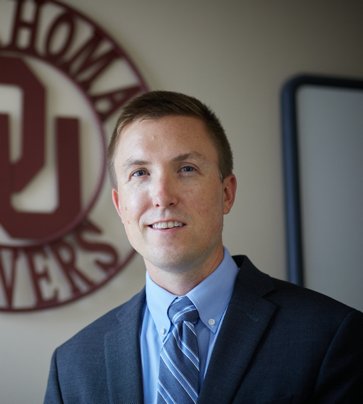
January 25, 2023
Selective upgrading of renewable biomass and waste plastics with reducible oxide catalysts
Steven Crossley
University of Oklahoma
Norman, OK
Abstract: The conversion of renewable biomass, waste plastic, natural gas, carbon dioxide, and many other important emerging streams to high-value fuels and other products relies on highly active and stable catalysts capable of targeting specific bonds in a complex reaction environment. This presents a formidable challenge. Among the most promising families of catalysts to carry out this task, particularly for C-O bond activation, are metals supported on active reducible supports such as TiO2 or MoO3. These catalysts are also incredibly complex. Because so many different surface features exist under reaction conditions, the underlying reason behind their promising behavior often remains elusive. In this talk, we introduce a unique approach to differentiate active sites by spatially separating them on carbon nanotube hydrogen highways. This allows us to differentiate active sites that are created on reducible oxide supports promoted by the metal from unique active sites that are created around the perimeter of metal nanoparticles. We show several examples relevant to the production of high-value products from biomass and waste plastics to illustrate how this decoupling of active sites can help us to better understand and design improved catalysts in emerging areas.
Bio: Steven Crossley received his Ph.D. in chemical engineering with Daniel Resasco from the University of Oklahoma in 2009. From 2009-2011, he conducted research at ConocoPhillips, now Phillips 66, in the areas of fluid catalytic cracking and hydrocracking. In August 2011, Dr. Crossley joined the University of Oklahoma. His research involves evaluation of reaction mechanisms over zeolites and reducible oxides for biomass conversion, polymer upcycling, and CO2-free hydrogen generation. He is currently leading several large grants in the areas of waste polymer conversion and CO2-free hydrogen production. Dr. Crossley is the recipient the NSF CAREER award and holds the Teigen Presidential Professorship and Sam A. Wilson professorship. He served as the CATL division Programming Chair for the 2019 and 2020 ACS fall national meetings and has served in multiple elected roles in the division since. He serves as a faculty fellow of the Institute for Resilient Environmental and Energy systems at OU. He also served as president for the Great Plains Catalysis Society in 2022. Dr. Crossley works to facilitate the success of Native American students in STEM fields and serves as faculty advisor for the University of Oklahoma’s award-winning American Indian Science and Engineering (AISES) chapter.
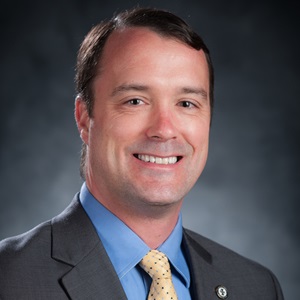
February 1, 2023
In Pursuit of Perfection: Are Polyampholytes the Answer?
Matt Bernards
University of Idaho
Moscow, ID
Abstract: The fields of biomaterials, tissue engineering, and regenerative medicine have the potential to impact millions of lives. Success in these fields is dependent upon molecular level control of the interplay between cells, materials, and proteins, both from the laboratory setting and upon implantation. This talk will be primarily focused on our recent work to develop polyampholyte polymers as a novel biomaterial platform. Polyampholyte polymers are composed of mixtures of positively and negatively charged monomer subunits. We have demonstrated that these polymers have nonfouling, or protein resistant properties, when their monomer composition is controlled as a 1:1 ratio at the molecular level in both polymer brush and hydrogel investigations. Furthermore, these polymer systems have a unique advantage over other nonfouling functional groups. It is possible to control additional material properties beyond nonfouling through monomer selection criteria. This includes controlling the mechanical properties, as well as adding in functionality through protein conjugation. Recent work demonstrating these capabilities will be presented and applications for these polyampholyte systems in biomaterials, space, and blood contacting devices will be proposed.
Bio: Matthew Bernards is an Associate Professor of Chemical & Biological Engineering at the University of Idaho, where he has been a faculty member since 2016. Since August 2019, he has also served as the Director of the NASA Idaho Space Grant Consortium and Idaho NASA EPSCoR programs. Bernards received his Ph.D. in Chemical Engineering at the University of Washington in 2008. Prior to joining the University of Idaho, he served as an Assistant Professor of Chemical Engineering at the University of Missouri, where he also held appointments in Bioengineering and the Nuclear Engineering Program. The Bernards research group is focused on multiple aspects of materials science and engineering. These interests include both experimental and computations investigations into the interactions that occur between biological entities and material interfaces and using this knowledge to design biomaterials that facilitate healing at the molecular level.
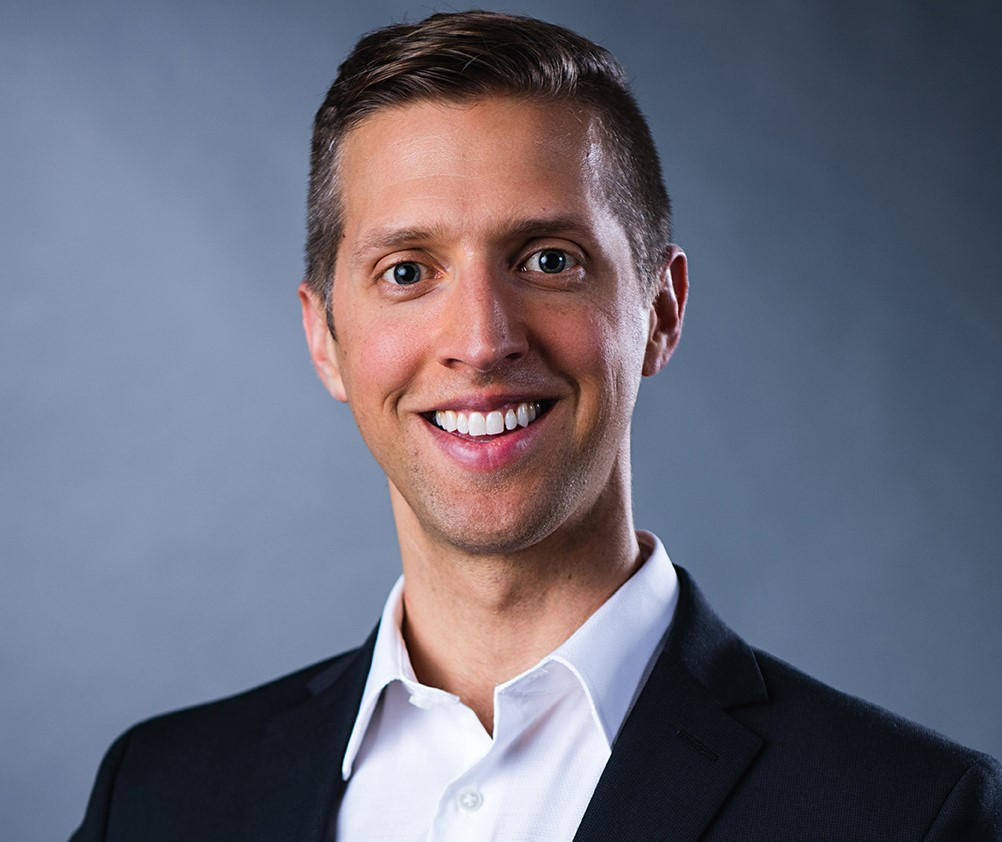
February 8, 2023
New Fuel Cell Catalysts and Electrode Structures
Jacob S. Spendelow
Los Alamos National Laboratory
Los Alamos, NM
Abstract: Polymer electrolyte fuel cell performance is limited mainly by the cathode, where poor oxygen reduction reaction (ORR) kinetics and slow transport of O2 to active sites lead to large overpotentials. State-of-the-art high surface area Pt alloy catalysts also suffer from poor durability due to loss of surface area (particle growth) and leaching of base metals. We have recently demonstrated that the use of intermetallic nanoparticle catalysts such as L10-PtCo can enable significant improvements in long-term performance due to improved stabilization of base metal in the ordered lattice. Recent results and future directions for this catalyst research will be discussed. While kinetic performance and durability of these catalysts is promising, performance at high power densities continues to be limited by slow O2 transport. Several factors, including slow diffusion through ionomer films, Knudsen diffusion through micropores, and pore blockage by liquid H2O contribute to these transport limitations. Design of unconventional electrode structures that can minimize these limitations is needed to enable full utilization of cathode catalysts. New hierarchical electrode structures capable of reducing these transport losses will be presented.
Bio: Jacob Spendelow received his B.S./M.S. from Case Western Reserve University in 2002/2003, and his Ph.D. in Chemical and Biomolecular Engineering from the University of Illinois at Urbana-Champaign in 2006, where he conducted research on electrocatalytic properties of model single crystal surfaces, laminar flow fuel cells, and direct formic acid fuel cells. He subsequently joined LANL as a Director's postdoctoral fellow in 2006 and has been a staff member since 2008. His research activities include work on catalysts and electrode structures for fuel cells, electrolyzers, and other electrochemical applications.

February 20, 2023
Machine Learning Guided Discovery of Polymer Membranes for CO2 Separation
Yasemin Basdogan
Abstract: Designing polymer membranes with high gas permeability and selectivity remains a grand challenge for energy, the environment, and economic sustainability. Increasing both the selectivity and permeability is a difficult constrained design problem for polymer membranes due a trade-off between these two properties. The complexity of chemical composition and morphology of polymers makes this design problem especially hard with trial-and-error or intuition-based strategies. In this talk, I will present a machine learning driven genetic algorithm to tackle the design problem of polymer membranes for CO2 separation from N2 and O2. Using literature data of permeability for three gasses - CO2, N2, and O2 - I constructed multiple ML models with different fingerprints to predict all three-gas permeability as well as the CO2/N2 and CO2/O2 selectivity values. Then, I employed a genetic algorithm to design new polymers and evaluated their performance with respect to the upper bounds using our machine learning models. I was able to identify new polymer membranes that are promising for both CO2/N2 and CO2/O2 separations. The framework identified here can be used to design polymer membranes for any application, where there is a constrained optimization problem. Finally, I will outline the strengths and limitations of this approach for any design problem, as well as the imminent challenges and opportunities with using machine learning guided data-driven inverse design of polymer membranes.

February 23, 2023
Sungjin Kim
February 27, 2023
Heyi Liang
March 2, 2023
Dylan Cousins
March 9, 2023
Achraf Noureddine
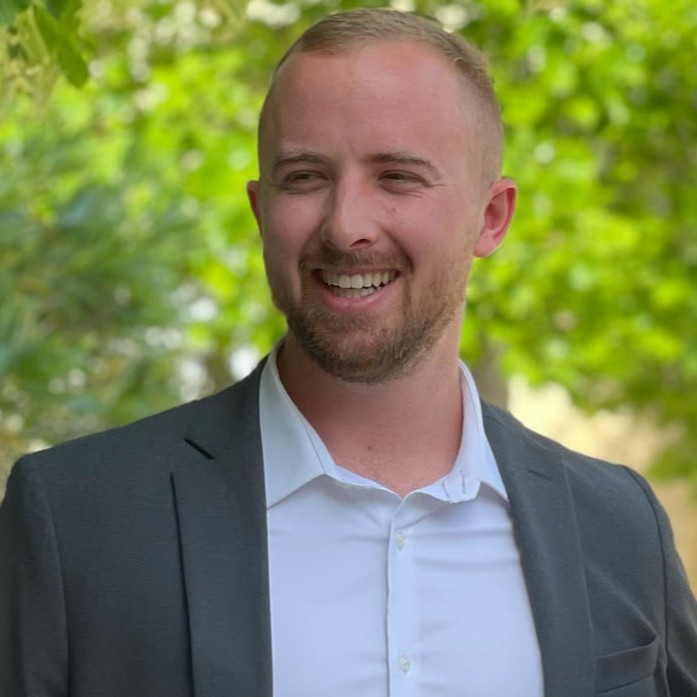
March 22, 2023
The undercover anti-agent ATF4 and DIY lab automation with machine learning
Blaise L. Mariner
The University of New Mexico
Albuquerque, NM
Abstract: The first part of my talk will describe work on the highly conserved, stress-responsive transcription factor ATF4, which has roles in neurodegeneration, diabetes, cancer, and aging. Recent work in our lab has identified drugs that can greatly extend the lifespan of multiple simple model organisms, specifically by acting through ATF4. I have shown that this response is largely conserved in mouse cells in culture, and that in these cells ATF4 is an important regulator of protein turnover. Protein turnover is a key feature of many significant diseases of aging such as Alzheimer’s, suggesting that the drugs we have identified or their derivatives could lead to treatments for these diseases. In the second part of my talk, I will describe other recent work in our lab, where we have used machine learning-based approaches combined with custom designed hardware and software to build a $500, 3D-printed laboratory automation system that will be used to accelerate our research.
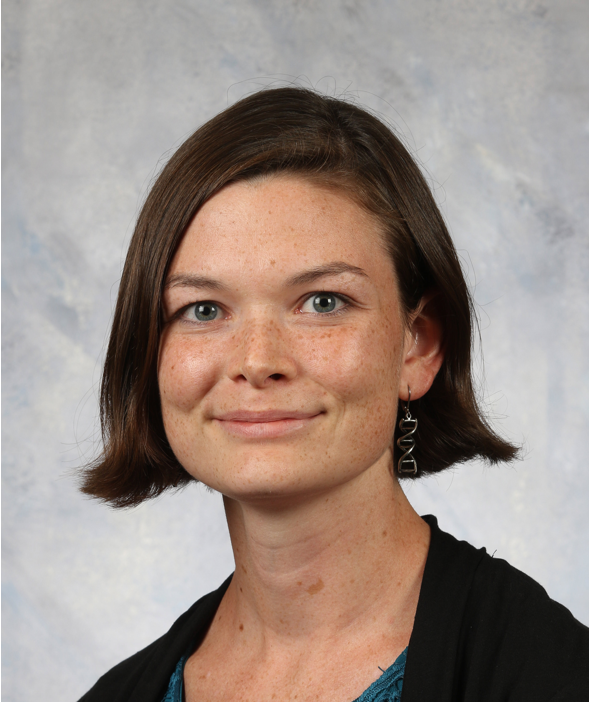
March 29, 2023
Assessing In-Situ Membrane Protein Structures Using Liquid Surface X-ray Scattering
Crystal Vander Zanden
CU Colorado Springs
Colorado Springs, CO
Abstract:: 70% of pharmaceutical drugs bind membrane protein targets, yet knowledge of membrane structure lags far behind what is known about aqueous proteins and nucleic acids. In the Vander Zanden lab, we use complementary liquid surface X-ray scattering and molecular dynamics methods to study the structure of protein/membrane interactions, particularly focusing on protein families that are difficult to capture due to their dynamic behavior at membrane surfaces. One such example is the galectin protein family. Galectins bind glycolipids through a carbohydrate recognition domain, then assemble into ordered domains through oligomerization. This oligomerization event regulates key cell signaling pathways, such as cell metastasis and neuron development, therefore this research is providing foundational knowledge to support drug development efforts and ongoing clinical trials that target galectins in disease. Through the use of wild-type and bioengineered galectin variants, we are able to determine the structure and function of different components of galectin proteins.
Bio: Dr. Crystal Vander Zanden (she/her) began her faculty appointment in 2019 as an Assistant Professor in the Department of Chemistry and Biochemistry at the University of Colorado Colorado Springs. She received her undergraduate degree in Biochemistry from Doane University in Crete, Nebraska (2011), and earned her PhD in Biochemistry at Colorado State University under Dr. Shing Ho (2017) with funding from an NIH/NIGMS F31 Fellowship. Crystal is a proud alumnus of UNM's ASERT (NIH IRACDA) post-doctoral program. Her post-doctoral research was with Dr. Eva Chi in the Center for Biomedical Engineering. During her post-doc, she became interested in the structure of biological membranes and membrane-binding proteins, which provided the foundation for the research she is doing today. You can read more about her lab's research at www.vanderzanden-lab.com
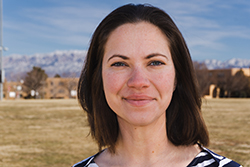
April 5, 2023
Heterochiral DNA Nanotechnology for Biomedical Applications
Tracy Mallette
The University of New Mexico
Albuquerque, NM
Abstract:: DNA based molecular computing has widespread potential for biomedical applications like disease detection or treatment and as a research tool to explore the fundamental biology of cells and processes. However, DNA molecular computers are susceptible to degradation by nucleases in biological media, which limits their practical applications . One way to create more robust DNA computers is through the use of mirror image “L-DNA” which has a double helix twisting to the left, as opposed to the right-handed twist of natural D-DNA. This renders them resistant to degradation by nucleases. In this talk, I will discuss my development of an interface between an L-DNA bioorthogonal computing system and natural biology. My system can translate signals from one chiral domain to another and can be further improved by the addition of L-DNA domains that act as protective caps on D-DNA domains. I demonstrate that the D-DNA components of strand displacement-based molecular circuits constructed using this technique resist exonuclease-mediated degradation during extended incubations in serum-supplemented media more readily than similar devices without the L-DNA caps. I further demonstrate that our protection designs improve function of heterochiral strands in a living human cell line. My work thus enhances the state of the art for robust heterochiral circuit design suitable for practical applications such as in vivo biomedical diagnostics.
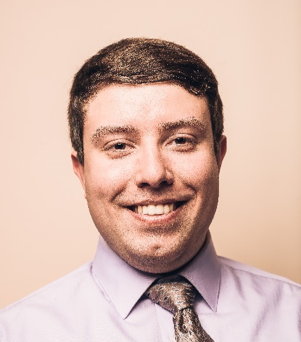
April 12, 2023
Strain-Induced Phase Separation of III-V Semiconductors for Quantum Applications
Leonid Miroshnik
The University of New Mexico
Albuquerque, NM
Abstract: DNA-based molecular computing has widespread potential for biomedical apExternally applied strain provides a pathway to study strain-dependent compositional manipulation within semiconductors and produce addressable quantum structures at predetermined locations. We exploit non-Fickian diffusion of large and small atoms (e.g., As vs. Sb) as well as phase separation, which strongly depends on strain, to steer compositional variation. Several experimental platforms have been developed to apply patterned 1D and 2D strain fields during high temperature annealing of GaAs-based epitaxial quantum wells: (1) patterned and stressed dielectric film deposition and (2) standing surface acoustic waves created by interdigitated transducer. A variety of characterization techniques, such as Raman spectroscopy and atomic force microscopy, are used to indirectly as well as explicitly measure the strain field, where the stress magnitude reaches the level sufficient to influence atomic diffusion and phase separation. We also simulate the strain field, using continuum modeling that quantitatively compares well with experimental observations. We have conducted initial thermal annealing experiments on a GaAsSb layer to demonstrate strain-dependent phase separation that leads to ‘quantum dot’ formation on the order of 5 nm in size. In this presentation, I will share experimental techniques I have developed to systematically study non-Fickian atomic diffusion, unifying theory that describes such diffusion process, and evidence to support our new approach to form addressable quantum structures.
Bio: Leonid Miroshnik earned his Bachelor of Science in Chemical Engineering from Drexel University in 2014. He previously studied multiphase flow granular systems for explosives detection at Purdue University, where he earned his M.S in Chemical Engineering (2018). Leo is currently working on his PhD at The University of New Mexico. His current work is focused on using externally applied strain to guide phase separation within III-V semiconductors to create novel quantum structures.
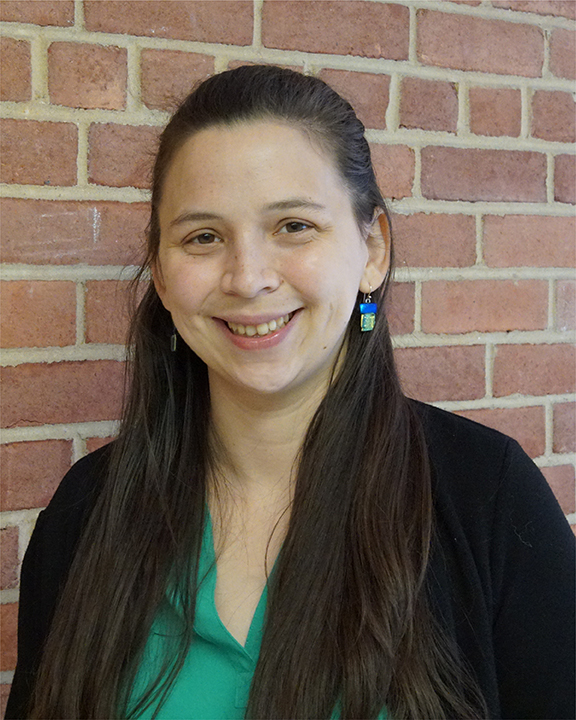
April 19, 2023
Impacts of Confinement: From Polymer Films to Bacteria
Kōnane Bay
CU Boulder
Boulder, CO
Abstract: Both polymer films and bacteria can experience confinement. Polymer films undergo confinement when the film thickness approaches the average molecule size. While bacteria experience structural confinement when they inhabit tight porous media such as gut, lung mucus, soils, and sediments.
In the first part of the seminar, I will describe my work in developing a method that overcomes the previous challenges in quantifying the mechanical properties of confined polymer films and how this method has led to new discoveries in structure-property relationships for ultrathin polymer films. The technique directly measures the uniaxial stress-strain response of both liquid-supported and freestanding polymer films. In this work, we quantify the influence of thickness (10nm-360nm), and molecular weight across a broad range (61kDa-2135kDa) on the deformation and failure response of ultrathin polystyrene films. We observe a molecular weight-independent thickness-transition in strain localization and a molecular weight-dependent decrease in maximum stress. We develop a model that provides new insights into how polymer behavior is altered due to changes in the entanglements and mobility in a polymer network upon dimensional confinement. Overall, this work couples fundamental polymer physics and polymer mechanics to provide new design guidelines for engineering ultrathin polymer films with enhanced mechanical strength for membrane and electronic applications.</.p>
In the second part of my seminar, I will focus on my work on understanding how bacteria grow and move in confined structured environments. The majority of the previous work with bacteria has focused on their behavior in liquid or on 2D surfaces, such as at liquid-air interfaces or on flat substrates. However, less work has focused on bacteria that grow in closed confined structured environments. Here, we 3D print both planktonic E. coli and biofilm former Vibrio Cholerae into jammed hydrogel matrices in a closed system and observe the growth morphology over time. Through tuning motility and controlling the pore size of the surrounding hydrogel matrix, we develop fundamental insights on how bacteria can remodel their environment and reshape themselves to migrate in confined structured environment.
Bio: Dr. R. Kōnane Bay is an Assistant Professor in the Department of Chemical and Biological Engineering at University of Colorado Boulder. She received her B.S. in Materials Engineering from Rensselaer Polytechnic Institute and M.S. and Ph.D. in Polymer Science & Engineering from the University of Massachusetts Amherst, where she studied the mechanics of ultrathin polymer films. She did her postdoctoral training as Princeton Presidential Postdoctoral Research Fellow at Princeton University working on the bacteria growth and motility in complex environments. Her lab, Huli Materials Lab, focuses on understanding and leveraging biological systems to develop living polymeric materials for biotechnology, sensing, and protection.
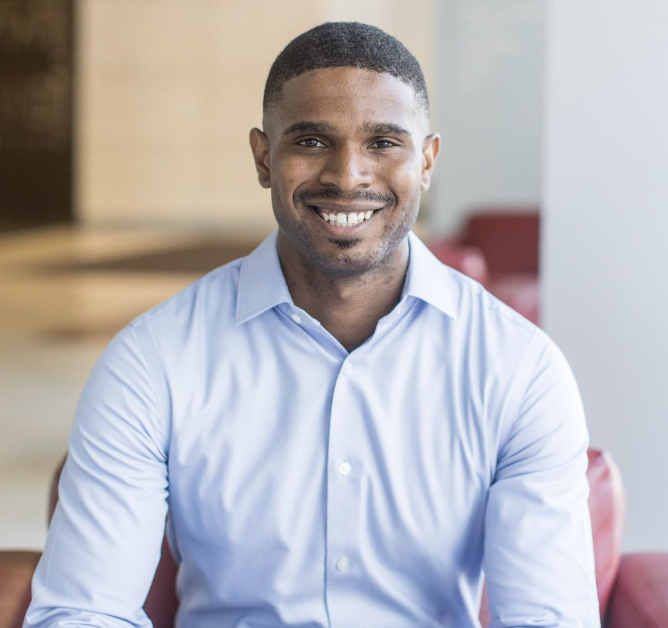
April 26, 2023
Microfabrication Approaches to Control Stem Cell Fate and Function
Quinton Smith
UC Irvine
Irvine, CA
Abstract: The Smith lab focuses on bridging the gap between fundamental stem cell biology and the clinical application of stem cell derivatives. Miniaturization technologies from the electronics industry enable engineers to build models of human physiology. In particular, these technologies permit controlling interactions between individual cells and their physical microenvironment and spatial information like gradients in chemical signals. Coupling these powerful tools with stem cell and organoid technology allows the precise re-creation of a tissue’s natural environment in the body. Smith’s lab is leveraging these organ-on-chip model systems to uncover new biology related to human development and study how organs maintain homeostasis, become diseased and regenerate.
Bio: Dr. Smith is an Assistant Professor in the Department of Chemical and Biomolecular Engineering at the University of California, Irvine. Dr. Smith received his bachelor's degree from the University of New Mexico in chemical engineering and his Ph.D. in 2017 from Johns Hopkins University in chemical and biomolecular engineering. His predoctoral research was supported by an NIH/NHLBI F-31 and NSF Graduate Research Fellowship. In addition, he was named a Siebel Scholar in 2017. After completing his doctorate, he trained as a Howard Hughes Medical Institute Hanna Gray Postdoctoral Fellow at the Massachusetts Institute of Technology.
